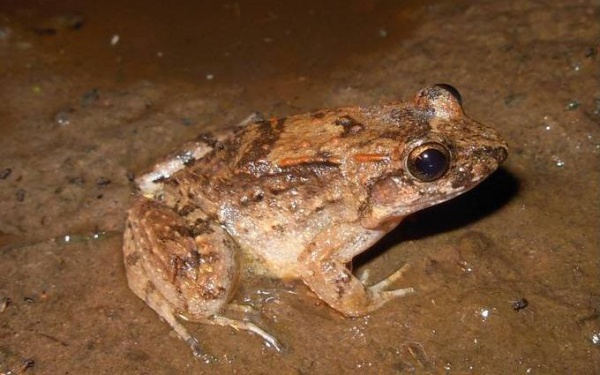Facts About Leptodactylus petersii
Leptodactylus petersii is a frog species within the Leptodactylidae family, predominantly found in the Guianas and the Amazon Basin. It is often mistaken for similar species such as Leptodactylus podicipinus and Leptodactylus wagneri, leading to some confusion in historical records.
In terms of size, male Leptodactylus petersii typically measure between 27–41 mm from snout to vent, while females are slightly larger, ranging from 31–51 mm. Their dorsal coloring can vary from greenish or grayish brown to reddish brown, featuring dark brown to black markings and a distinctive dark triangular mark between their eyes. The underside is smooth and white with gray to black mottling, while the throat is dark gray with white spots. Their eyes range from bronze to reddish brown. Notable characteristics include small spicules on their back, glandular ridges, and a prominent tympanum. Males also possess two large spines on their thumbs.
The tadpoles of Leptodactylus petersii can grow up to 21 mm in total length, with their tails constituting 60% of that length by the time they reach Gosner stage 36.
These frogs flourish in tropical rainforests, forest edges, open areas, savanna patches within rainforests, and open cerrado formations, provided these areas are below 600 meters in elevation. They are nocturnal, typically staying close to the ground near water sources. Their breeding process involves laying eggs in foam nests near water, where the tadpoles will develop.
Leptodactylus petersii is a common species found in numerous protected areas and is not currently considered threatened by the IUCN.

 Brazil
Brazil